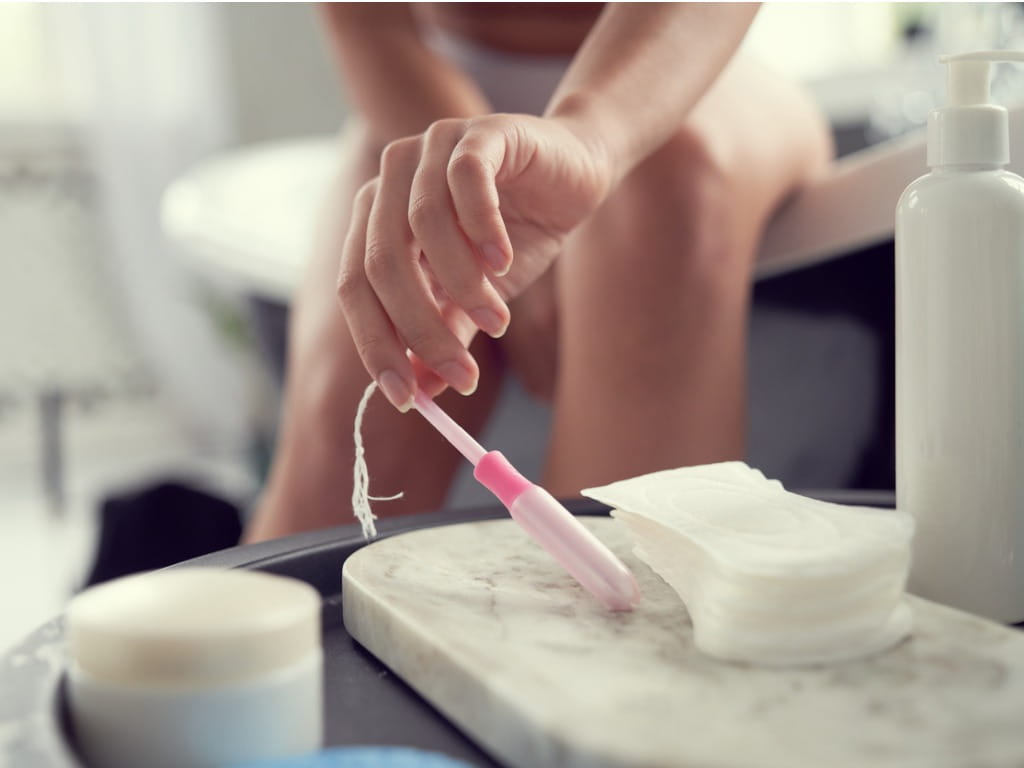What is Toxic Shock Syndrome?

The Bottom Line
Toxic shock syndrome is a life-threatening disease caused by certain bacteria. People who have open wounds, who have had recent surgery, or who have devices within their bodies may be at risk for toxic shock syndrome.

What is toxic shock syndrome?
Toxic shock syndrome is a serious disease caused by certain types of Staphylococcus and Streptococcus bacteria. Symptoms include fever, rashes, and low blood pressure.
How common is toxic shock syndrome?
Toxic shock syndrome is a rare disorder, affecting just 1.5-11 per 100,000 people. It most commonly affects people less than 5 years of age or older than 45 years.
How does toxic shock syndrome happen?
Toxic shock syndrome is caused by bacteria that produce a toxin within the human body. The toxin disrupts the body’s normal immune system function, leading to multiple life-threatening signs and symptoms.
How soon do toxic shock syndrome symptoms appear?
Initial symptoms of toxic shock syndrome are mild and may resemble a viral illness. Within 1-2 days, affected individuals will then develop worsening symptoms including low blood pressure, confusion, and organ failure.
How do you prevent toxic shock syndrome?
To prevent toxic shock syndrome, wear tampons for a maximum of 8 hours, and do not reuse tampons. Use low absorbency tampons and wash your hands before and after tampon insertion. If you use menstrual cups, sterilize the cups by boiling them between uses.
Can children get toxic shock syndrome?
Toxic shock syndrome was first reported in 1978. The initial reports involved a group of children who developed fevers, rashes, laboratory abnormalities, low blood pressure, and organ failure. None of the children had a history of toxic exposures, and none had relatives with similar symptoms. A toxin-producing type of Staphylococcus aureus bacteria was detected in these children.
How do you get toxic shock syndrome from tampons?
In 1980, numerous cases of toxic shock syndrome were reported to the Centers for Disease Control (CDC). Nearly all of the affected individuals were female, and 95% of the women became ill within a few days of the start of their menstrual cycle. Further studies found that the use of one particular tampon brand (“Rely”) was strongly associated with the development of toxic shock syndrome in these women. The Rely brand of tampons had been sold in the United States since 1978. These tampons were composed of foam and carboxymethylcellulose. These synthetic components made Rely tampons highly absorbent, and some scientists believe that the use of these superabsorbent tampons created favorable conditions in the vagina for bacteria and toxin production. The manufacturer of Rely tampons stopped making the product in September 1980, and after the production was discontinued there were fewer cases of menstruation-associated toxic shock syndrome reported to the CDC.
Since the 1980’s, additional cases of toxic shock syndrome, unrelated to menstruation, have been reported in both male and female patients with burns, wounds, and infections, as well as after surgical procedures. Scientists have also discovered that toxic shock syndrome can also be caused by certain types of Streptococcus bacteria. The disease occurs when the Staphylococcus or Streptococcus bacteria produce a potent toxin called a “superantigen” that causes a disruption in the body’s immune system function. This abnormal immune response leads to the severe signs and symptoms that are associated with the disease process. Currently, toxic shock syndrome is a rare disease that only affects about 1.5-11 per 100,000 people. Most cases of toxic shock syndrome involve the extremes of age (those less than 5 years of age or older than 45 years). More cases of toxic shock syndrome are diagnosed in the winter and spring seasons than in the summer and autumn.
What does toxic shock syndrome feel like?
People affected by toxic shock syndrome often have initial symptoms that resemble viral infections, including fever, muscle aches, and weakness. Within 1-2 days, however, the symptoms can rapidly progress to include a diffuse sunburn-like rash, dangerously low blood pressure, watery diarrhea, decreased urine output, extremity swelling, and confusion. One to three weeks after the initial symptoms, patients may experience skin peeling that often involves the palms and soles.
How long does toxic shock syndrome last?
Since toxic shock syndrome is a bacterial infection, it requires hospitalization, specialized medical treatment, and administration of strong antibiotics. Because wounds and foreign bodies (like intrauterine devices [IUD’s], gauze packing, and pessaries) are associated with superantigen toxin production, an extensive physical examination is required to evaluate for potential bacterial sources. Patients with toxic shock syndrome typically require admission to an intensive care unit or a burn center and may be hospitalized for days to weeks depending on the severity of their condition.
Is toxic shock syndrome fatal?
Even when the disease is treated aggressively, it can still be fatal. Up to 10% of children and 80% of adults who are diagnosed with toxic shock syndrome will die from the disease or its complications.
How can you reduce the risk of getting toxic shock syndrome?
To reduce the risk of toxic shock syndrome, the United States Food and Drug Administration recommends using the lowest absorbency tampon necessary, wearing tampons only during menstruation, and discarding tampons after 4-8 hours of use. In recent years, many people have chosen to use menstrual cups as an alternative to tampons. Menstrual cups, which can hold up to 40 milliliters of blood, can promote the growth of Staphylococcus bacteria growth and toxin production in the vagina, especially if they are not adequately sterilized (not just cleaned) between uses. Several cases of toxic shock syndrome associated with menstrual cup use have been reported in medical journals.
What should you do if you suspect toxic shock syndrome?
If you or a loved one develops symptoms of toxic shock syndrome, seek medical care immediately. If you experience adverse or unexpected symptoms from tampon use, get guidance from Poison Control immediately. Get a fast personalized recommendation online or call 1-800-222-1222. Both options are free, confidential, and available 24 hours a day.
Kelly Johnson-Arbor, MD
Medical Toxicologist
For media inquiries, please contact osterthaler@poison.org.
Poisoned?
Call 1-800-222-1222 or
Prevention Tips
- Use low absorbency tampons and replace tampons after 4-8 hours of use.
- Do not reuse tampons.
- Wash your hands with soap and water before and after changing tampons or wound dressings.
This Really Happened
A healthy 20-year-old woman developed fevers, chills, vomiting, and lower abdominal pain on the sixth day of her menstrual cycle. She went to an Emergency Department, where she was found to have abnormally low blood pressure, a temperature of 102 degrees Fahrenheit, and a rash on her lower abdomen. She reported using menstrual cups and stated that she rinsed them with hot water between uses because she had recently run out of soap. She was diagnosed with toxic shock syndrome and admitted to an intensive care unit where she received intravenous fluids and antibiotics. Her condition improved within several days and she was eventually discharged home.For More Information
The Facts on Tampons—and How to Use Them Safely (US Food & Drug Administration)
References
Poisoned?
Call 1-800-222-1222 or
Prevention Tips
- Use low absorbency tampons and replace tampons after 4-8 hours of use.
- Do not reuse tampons.
- Wash your hands with soap and water before and after changing tampons or wound dressings.
